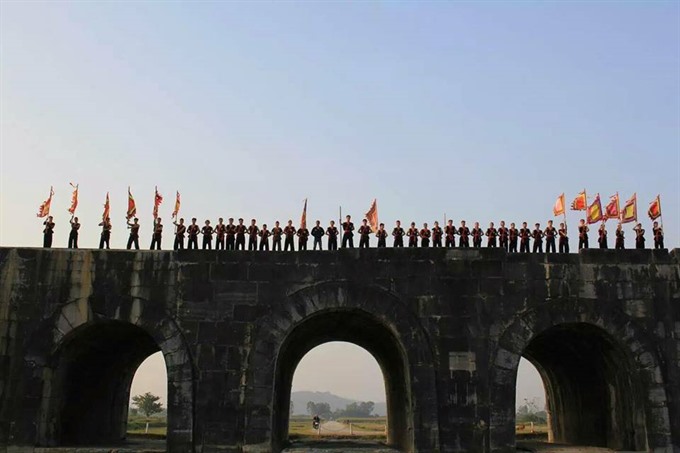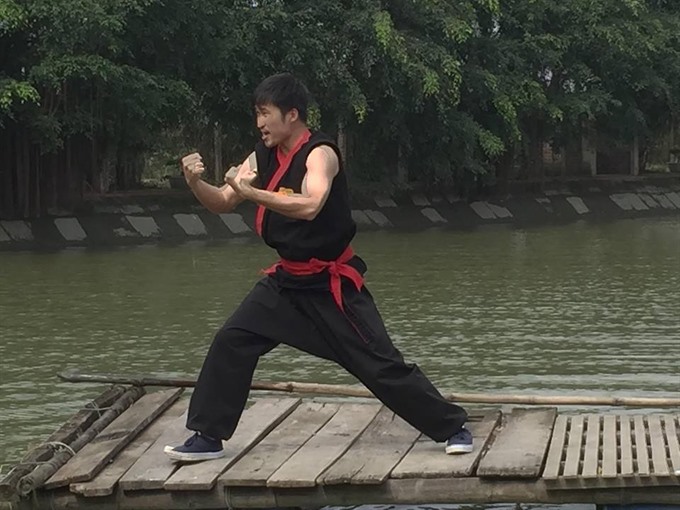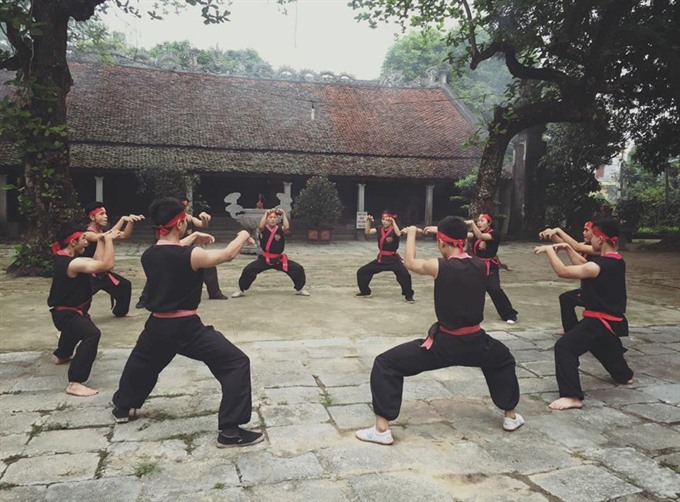 |
| Popular: Dung has opened more than 10 martial arts clubs across Thanh Hoa and drawn more than 500 students. |
Viet Nam News
by Hong Van
Tran Van Dung stumbled into a traditional Vietnamese martial art called Nhat Nam as a college kid looking for something to do. After falling in love with the activity, he has shared passion for the martial art with hundreds of pupils in his hometown in the central province of Thanh Hoa.
Dung has established more than 10 martial art clubs since early 2013, attracting more than 500 students from across Thanh Hoa, the birthplace of Nhat Nam.
Nhat Nam is one of a number of martial arts practised in Viet Nam, including the traditional martial art called "vovinam", considered the country’s largest and most developed martial art. There’s also the martial art of the Binh Dinh region, once a secluded border zone where residents developed a special combat style to protect themselves. "Van an phai" is a style practised by the imperial guards in the Nguyen Dynasty based in the royal capital city of Hue. The seven mountains region martial art is a culmination of styles and practices developed in the isolated region along Viet Nam’s southwestern border.
From its origins in Thanh Hoa and Nghe An provinces, Nhat Nam martial art reached its peak in the 18th century and has been gradually fading ever since.
In the 20th century, it started to gain more attention thanks to martial art master Ngo Xuan Binh, who was born into a family with long tradition of practising this art. He inherited the basic techniques from his family and devoted time to study and develop this style of martial art.
Dung was a first-year student at the Hai Duong Medical Technical University when he first learned about Nhat Nam.
“At that time due to my poor health, I wanted to find a sport to pursue to improve my health,” said Dung.
There was a Nhat Nam martial art club at the university and Dung immediately found he loved the practice.
After spending some time with the club, he was “astonished” to find out that his hometown was also the cradle of Nhat Nam.
“I quickly realised that Nhat Nam martial art is a cultural heritage of our ancestors. Practising this art, people can learn about social manners, improve health, acquire fighting techniques and have a clear and calm way of thinking,” he said.
Even though Dung is now working full time as a technician in the X-ray department at a hospital in Thanh Hoa, he still devotes time to run martial art clubs in his hometown since 2014.
“At the beginning, we encountered so many difficulties. It was hard to attract learners because most local people would not know about this martial art. Meanwhile, local parents were reluctant to let their children join classes because they were concerned that the practice would make their children prone to violence and that it would distract them from learning at school,” Dung said.
There were only 13 regular students in the early days.
Dung and those sharing his passion for martial arts had to visit families in the neighbourhood to lure kids to join his free class and explain to the parents the historical and cultural value, as well as the contemporary purpose, of practising Nhat Nam martial art.
He also called for college students to join his club.
“My students and I often performed martial arts at communal festivals to make it better known and more accessible,” Dung said.
In five years of operation, Dung established more than 10 martial arts clubs and attracted more than 500 students.
The Hoang Quy Elementary School in Hoang Hoa District now includes Nhat Nam martial art in its extracurricular programme for pupils.
Principal of the school Nguyen Truong Giang learned about the martial art through Dung. Finding it useful for improving physical and mental health, he discussed with teachers and decided to establish the Nhat Nam martial art club for the school.
 |
| Many benefits: Students acquire mindfulness, balance and harmony with nature, while learning to appreciate life, said Dung. |
 |
| Distinctive: Characteristic fighting techniques of Nhat Nam martial art are avoiding blows, striking swiftly and exposing vulnerable spots on the body of the enemy that can incapacitate them effectively. — Photos courtesy of Tran Van Dung |
The martial art is also included in physical education classes at several primary schools in Thanh Hoa.
Phan Van Manh, a former student, has become a trainer. He opened a martial arts club in Thieu Hop Commune and attracted hundreds of pupils.
“I feel grateful that many are passionate about Nhat Nam martial art. They help me realise my dream of reviving this martial art in my homeland,” said Dung.
Dung and his students have brought Nhat Nam to several events, including the Con Son Kiep Bac Festival in Hai Duong Province, the National Tourism Year in Thanh Hoa in 2015 and local festivals.
A Vietnamese martial art
Originally, Nhat Nam was named vo het (screaming martial art) for the typical fierce scream of the martial artists when they practised.
The scream demonstrates the strength and wildness of the Nhat Nam martial art. It is not only a way to intimidate the enemy but also to adjust and maintain the breath of the practitioners.
It is believed that in the old time, local people in the Thanh Hoa and Nghe An region used this style of martial art to fight wild beasts and enemies.
When master Ngo Xuan Binh reintroduced and promoted it in Ha Noi in 1980s, he renamed it Nhat Nam, which can be roughly translated as Unified Viet Nam.
“There are some unique characteristics of the Nhat Nam martial art that we can’t find in any other martial art style. The origin of this martial art is associated with the survival fight between human and wild beasts, so the moves are mostly about imitating the strengths of wild animals. Some may demonstrate the clever acts of pythons, an animal commonly found in Thanh Hoa and Nghe An, like throwing, grappling and wriggling, or the acts of the tiger and eagle, like snatching and tearing,” said Dung.
A characteristic fighting technique of the Nhat Nam martial art is avoiding blows, striking swiftly and exposing vulnerable spots on the body of the enemy to incapacitate them effectively.
“The first lesson a person learns in Nhat Nam is that martial arts is not about violence but training one’s self. Practising martial arts, students will acquire mindfulness and the balance and harmony with nature as well as learn to appreciate life,” said Dung. — VNS
OVietnam